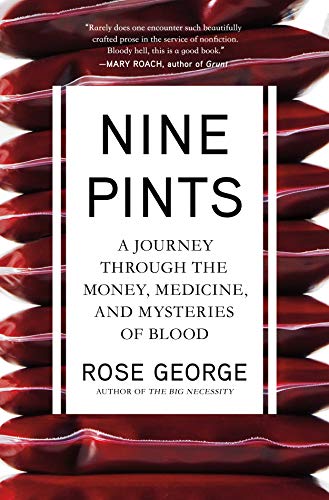The sacred pint alone can unbind the tongue. James Joyce
Following up on my blog of June 30, here’s more fascinating facts about blood. This time, what contribution war made to blood transfusion services. In Nine Pints: A Journey Through the Money, Medicine, and Mysteries of Blood , Rose George shares, in reference to World War II, how “London’s authorities had spent years readying for calamity on all fronts. But they had not thought it necessary to prepare any blood.” Below are excerpts from her excellent book!

- In 1937, the English secretary of state for war had been asked what the nation proposed to do about a mass blood supply. He said, “It is more satisfactory to keep our stores of blood on the hoof.” He meant that the best way to store blood was how nature intended: inside a human body.
- By World War II, blood transfusion had been fully accepted by the British military, which planned in prewar years to set up an efficient blood supply to its forces and operated it extremely effectively. Field Transfusion Unit trucks carried refrigerators containing 1,100 pints of fresh whole blood. [This had a very short life span!]
- The actual emergency blood supply for London, a city of several million people, consisted of the stock kept by four London county hospitals for urgent maternity use: eight pints.
- Yet in wartime Barcelona, Frederic Durán-Jordà, a Catalan physician, had successfully pioneered the mass collection, storage, and delivery of blood. He made blood mobile, transporting it to the front line in glass bottles in a converted fish van. Blood was withdrawn, mixed with citrate solution, then bottled. Barcelona’s blood was good for eighteen days.
- We owe a lot to Percy Oliver: Oliver’s was the world’s first voluntary blood panel and the beginning of a shift to a model of altruistic blood donation in Britain that has endured one hundred years.
- Dame Janet Maria Vaughan was a British physiologist, academic, and academic administrator. She researched in hematology and radiation pathology. In early April 1939, during World War II, she gathered some medical colleagues in her Bloomsbury flat; they would change modern medicine. She initiated creation of national blood banks in London, setting one up with Frederic Durán-Jordà. She used a modified milk bottle for blood collection and storage.
- She used ice-cream vans full of her bottled blood through bombed and blacked-out streets. Most of the drivers were women.
• The war embedded the idea of blood donation in popular consciousness like nothing else had done.
• For British Major General W. H. Ogilvie, “the greatest surgical advance of this war, more important even than penicillin, is the development of the transfusion service.”

